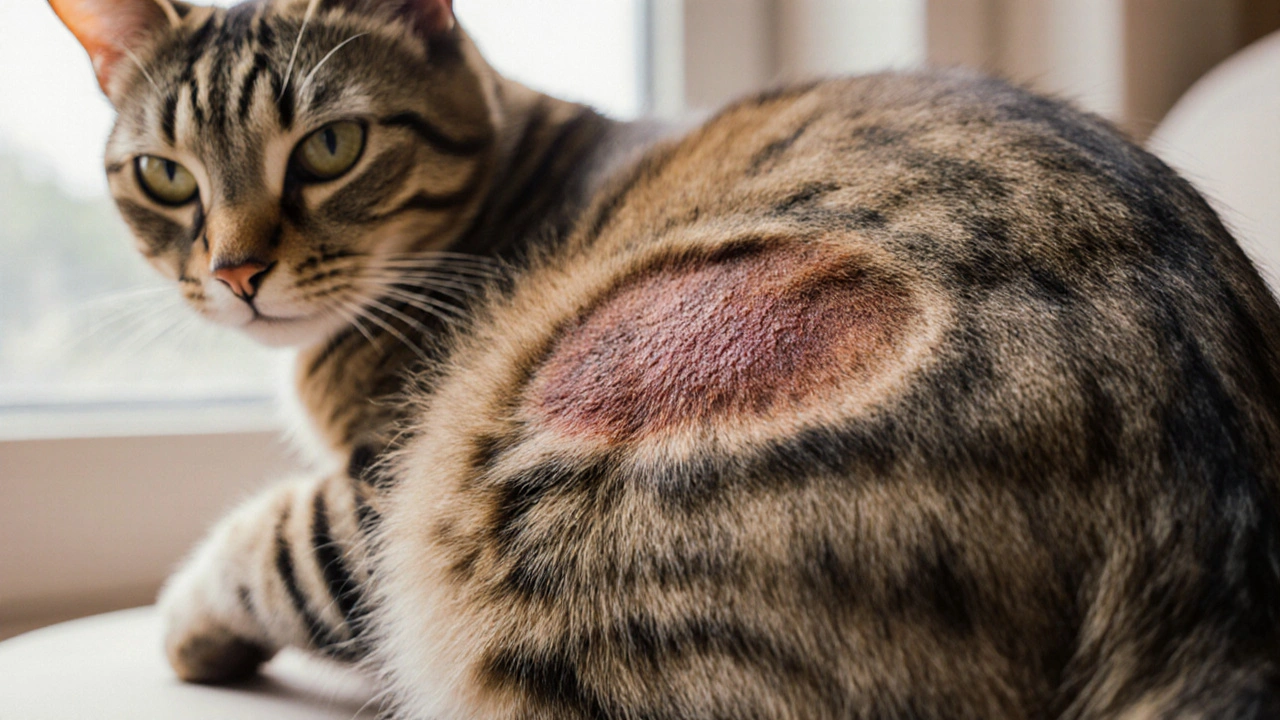Pet Skin Infection: Causes, Treatments, and Prevention
When dealing with pet skin infection, an inflammation of a dog’s or cat’s skin caused by microbes, parasites, or allergens. Also known as dermatitis in pets, it can manifest as itching, redness, scabs, or hair loss. Bacterial infection, usually Staphylococcus or Streptococcus species that invade broken skin, fungal infection, commonly ringworm fungi that spread through spores and parasite infestation, such as fleas, mange mites or ticks that bite and irritate the skin are the three big players. Understanding which one you’re facing is the first step toward relief.
Accurate diagnosis requires a vet’s eye because the symptoms overlap heavily. Vets often start with a visual exam, then add skin scrapings, fungal cultures, or bacterial swabs to pin down the culprit. This diagnostic loop enables targeted therapy and avoids unnecessary drug use. A good rule of thumb: if the rash spreads quickly, smells foul, or the pet seems unusually painful, schedule a check‑up right away. Early detection cuts treatment time and reduces the chance of chronic issues.
Once the cause is clear, treatment choices fall into two broad camps: topical treatment, creams, sprays, or shampoos applied directly to the skin and systemic options like oral antibiotics or antifungals. Topicals work fast on localized spots, especially for bacterial cases, while oral meds are better for deeper or widespread infections. Combining both often speeds recovery, but you must watch for side effects—some human drugs, like permethrin, are safe for dogs yet toxic for cats. Knowing the safety profile of each product saves you from accidental poisonings.
Prevention is the cheapest cure. Regular grooming removes loose hair and debris that harbor microbes. Flea and tick preventatives, whether spot‑on, oral or collar‑based, keep parasites at bay. A balanced diet rich in omega‑3 fatty acids supports skin integrity and immune function. Clean bedding, prompt cleanup of wounds, and limiting exposure to other infected animals further shrink risk. In short, a clean environment plus routine care creates a barrier that most infections can’t breach.
Choosing the right product can feel like navigating a maze of brands and claims. Look for products that list the active ingredient clearly—like chlorhexidine for bacterial cleanup or miconazole for fungal control. Check the concentration; higher isn’t always better if it irritates the skin. Price matters, but weigh it against the vet’s recommendation and the product’s safety record. For owners who love a side‑by‑side comparison, there are guides that break down trade‑offs, side‑effects, and cost per treatment, helping you pick a formula that fits your pet’s needs and your budget.
How to Pick the Right Treatment
Start with the vet’s diagnosis, then match the suggested medication class to your pet’s lifestyle. Active dogs may benefit from a fast‑acting spray that dries quickly, while indoor cats might do better with a gentle, fragrance‑free shampoo. If you’re dealing with a fungal outbreak, a short course of oral antifungal paired with a medicated dip often clears the infection faster than topical alone. Always follow the dosage schedule and finish the full course—even if the rash looks better halfway through—to prevent a rebound.
Below you’ll find a curated collection of articles that dive deeper into specific drugs, safety myths, and comparison charts. Whether you’re hunting for the best over‑the‑counter cream, need to understand why certain human meds are off‑limits for pets, or simply want a quick checklist for spotting early signs, the posts ahead have you covered. Let’s get you the knowledge you need to keep your furry friend comfortable and healthy.

